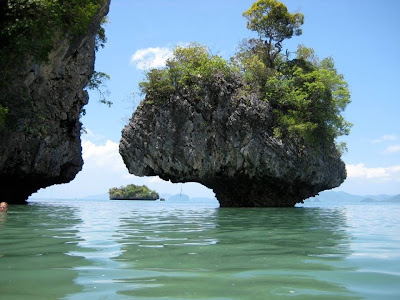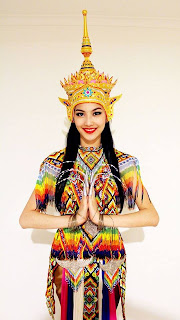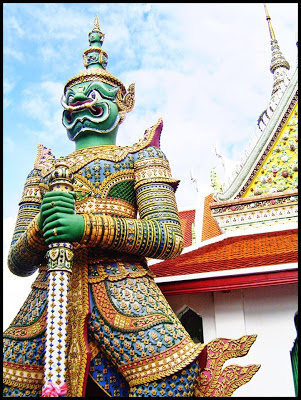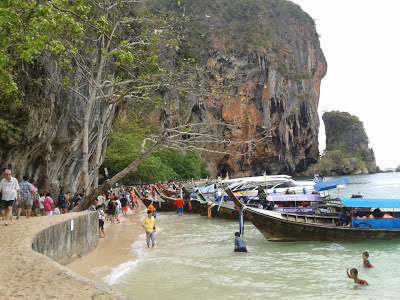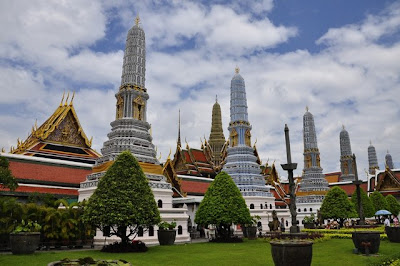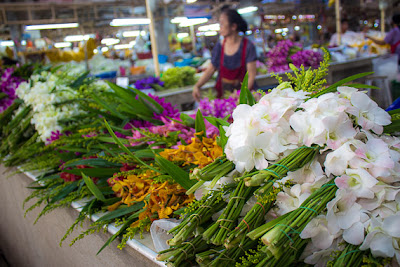Mae Sot, Northern Thailand’s gateway to Myanmar.
Mae Sot is a border town 5 km from the
border with Myanmar and is located in
Tak Province around 600 Km from Bangkok. The area around Mae Sot boasts some of the most pristine and rugged
mountains and dense
tropical jungles in Thailand with a huge variety of wildlife preserves, rivers, hot springs, waterfalls and national parks.
Places to visit include the famous
natural hot springs at
Mae Kasa just a short 15km drive from Mae Sot. A great place for walking around to take in the sights and
picnic areas.
Phra Charoen Waterfall located about 25 km from Mae Sot is a
beautiful waterfall featuring 97 steps with a trail leading you through
lush tropical jungle.
Tarawak Waterfall, part of the
Ti Lor Sor waterfalls is also is a great place with winding trails and various spots to rest and have a picnic.
Highland Farm Gibbon and wildlife sanctuary takes in and cares
for rescued mistreated, abandoned and sick gibbons and is set in
beautiful surroundings a lot of which was replanted by the owners. This
is a wonderful place to meet with and learn about the gibbons and local
wildlife preservation. The sanctuary also takes care of rescued bears,
birds, monkeys and foxes.
Temples of Thai and Burmese style are varied and numerous around the
area. Close to the border with Myanmar there is a Buddhist temple with
the huge reclining Buddha. Continue down and a short drive away you will
discover a pagoda and Buddha’s footprint.
Rim Moei Border market runs along the Thai side of the Thai
Mayanmar border Moie River and is filled with all kinds of goods from
Myanmar, Thailand and China. Products include rubies and many other
precious gemstones from Myanmar and other contraband and is a main
trading place for bulk traders there. A very interesting place to visit.
For a small fee and passport in hand you can cross into Myanmar for the
day over the Friendship Bridge which connects Thailand with the Myanmar
border town of Myawaddy.
Mae Sot Market in the centre of town offers an amazing
cultural mix of Thai/Burmese products including locally made handicrafts
and textiles by the local hill tribes, frogs, turtles, eels
(usually live), chicken, beef, pork, vegetables and many small jade and gem shops.
As well as the rich natural beauty of the area there are many
different traditional Thai customs of the local northern hill tribes
living the quiet rural lifestyle, in particular the Karen and Hmong
tribes. With these qualities Mae Sot and Tak Province offers truly
amazing experiences for travellers who want to see and contact with
nature, the local people and traditional Thai culture.
Mae Sot is largely unknown to the majority of visitors to Thailand
but will continue to develop due to it being one of the only two land
border crossings and is the main trade gateway into Myanmar which is
gradually opening its doors to the world after decades of isolation.
There are numerous domestic and international NGOs based in the area to
help cope with the thousands of refugees displaced by the years of
internal conflict.
For those who want to get involved with volunteer work there are
several local projects and outreach programs that need all the help they
can get whether it be actual volunteer work or donations for the many
orphans and refugee children and families.
Several projects are being planned in the area to improve the general
living conditions and education of the poorest local communities with a
focus on saving and restoring local traditions and customs, wildlife
conservation, environmental protection awareness, whilst at the same
time offering visitors a truly rich and rewarding experience watch this
space.
THAILAND-BESTHOTELS
PHUKET-BESTHOTELS

